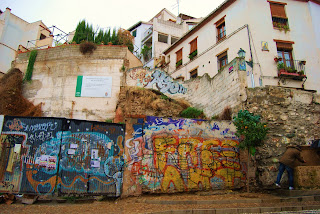Unfortunately, this is all I can share with you for this week as my week has been cut short at the MoCA: Reed College (Portland, Oregon) is flying me out to meet and spend some time with them! Before I go, though I will not be attending the Museum Studies session this coming Friday, I hope you will check it out at MoCA's website at http://www.moca-tucson.org/.
Museum Studies
Select Fridays
3pm, $5 for members, $10 for non-membersThis course is designed for participants in our Museum Studies Program, however, we are opening up the course to interested parties. Interested parties may include prospective docents, students, community members, artists wanting to learn more about art culture and the industry, teens considering a museum career, anyone interested in learning more about new art and new ideas.
April 1: What is a museum? What is an art museum? What is a contemporary art museum?
April 15: Modernism, Post-Modernism, High Corporatism: How Global Capital Affects World Heritage
May 13: The Culture Brokers: Who or what determines quality in art?
May 27: Priced Out: Museums and the Market
Last but not least,
Free on the evening of April 10th? Want to enrich yourself with an exquisite treat? Then make sure to mark on your calendar the Spring Gala by the Tucson Philharmonia Youth Orchestra! (Come support Jayanth, Eric, Adelynn, and me.)
P.S.: This will be my last performance with the TPYO before I start a new chapter with college. So..come!Spring Gala 2011
Sunday, April 10, 2011 • 7:00 pm
Catalina Foothills HS Auditorium
Tickets
General Admission $14
Senior/Students $7
Students who are current members of their school band or orchestra will receive a complimentary ticket
As to my fellow classmates, congratulations and best wishes to all who have heard, and have yet to hear, about their college admissions!
Until the next,
Axk.
































